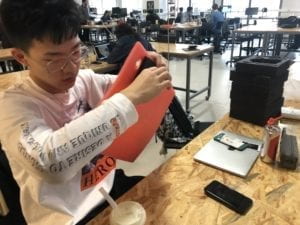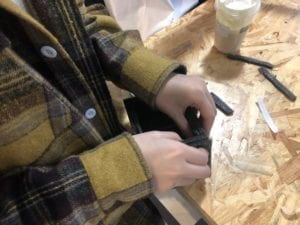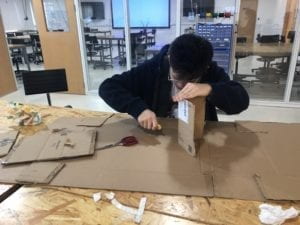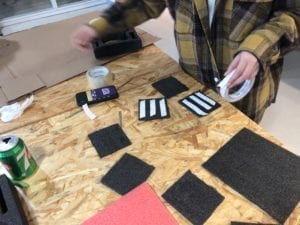How does advertisement look like in 2119?
Partners: Ellie, Mimi, Zhiqiu Wang
Before taking Inter-Lab, “Interaction” was a rather vague and abstract notion to me. Previously I thought interaction can happen between any two objects who have linguistic or any other form of communication. In the reading “The Art of Interactive Design”, the author identifies “interaction” as “a cyclic process in which two actors alternately listen, think and speak” and describes interactivity as a “continuous variable with relative measures”(The Art of Interactive Design, Crawford) which can be at different degree in different scenarios. This description gives me some hint of how I can improve my own cognition of interaction. Though interaction can happen in any two or more subjects, it shouldn’t be a mono-directional activity but requires reactions from both sides. The metaphor which describes interaction as a linguistic communication between two actors in an act reveals that to truly interact with each other needs skills of both understanding and reacting, and the latter is on the premise of the former. In the reading “Making Interactive Art: Set the Stage, Then Shut Up and Listen”, the author further explains to truly let people experience an interactive project requires abandoning preconceived ideas and fully create a free explore environment.

The project Expressive Tactile Controls aligns with my definition of interaction. In this program, buttons with different personalities will act differently when reacting towards the moving of fingers. They will first understand if the outsider motion is approaching or going away and then show different reactions basing upon its previous understanding.

Another program called 90×200 doesn’t align with my definition of interaction. It is an installation that dramatizes the emotions of frustration, anxiety, and delirium through mechanical movements. Because it acts upon a set code from computer instruction thus doesn’t have the process of understanding and reacting.
After discussing our cognition of interaction, we ultimately decided to make the 4D interactive billboard as our group project because it best conveys our opinion towards interaction.

We mainly used cardboard and foamed plastic to make the main body of the billboard and the projector which will project digital salesman/saleswoman. In our design philosophy, the 4D interactive billboard shows interaction because it can recommend different goods for different people. It will first detect a person’s mood and then providing variable products that may cater to that person. Both the process of understanding and reacting are embodied clearly in this kind of interaction.




